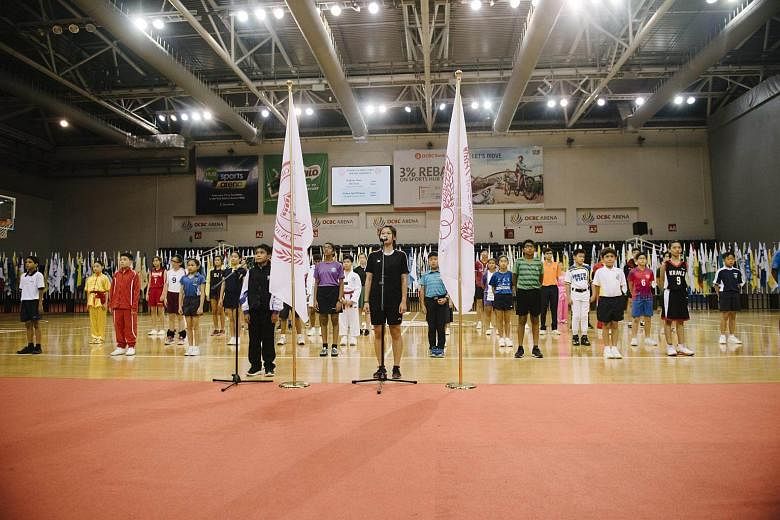The nuanced implementation of the Ministry of Education's (MOE) review of the National School Games (NSG) Junior Division sports competitions will be key in ensuring its goal of offering student-athletes more playing opportunities, noted various officials in the local sports fraternity.
The scheme, which applies to all 21 of the Junior Division sports competitions (for pupils aged nine to 11), takes place over the next three years and includes tiered competitions for certain sports and modified tournament formats.
Last year's hockey matches were 11-a-side affairs and this was not ideal, noted Singapore Hockey Federation president Mathavan Devadas.
His association has since recommended reducing the number of players, and on smaller fields, to develop technique and enthusiasm.
"In a five-a-side, they get more touches of the ball and hone their close control skills," he said.
"It's also important that they practise dribbling and passing in a match environment.
"If they get to touch the ball only three to four times in an hour-long game, they may get disinterested."
To ensure the pool of players was not halved, each school could be allowed to field two teams, he added.
After all, nothing beats on-field experience, said Anglo-Chinese School (Independent) rugby coach Adrian Chong.
Under-11 games involving Primary 4 and 5 pupils are 10 minutes long.
It is understood that a shift towards 10-minute halves has been suggested to give coaches more leeway to field their fringe players.
Chong said: "With more game time, it's beneficial for the child's growth in the sport; now he has a better chance of developing his skills."
This year's Games is expected to involve about 58,000 - up from 55,000 in 2016 - from more than 365 primary and secondary schools, junior colleges and centralised institutes across 29 sports.
It is Singapore's largest annual youth sports event and can be a medium for integration, said National University of Singapore sociologist Tan Ern Ser, though he stressed that there are caveats.
Last month, an Institute of Policy Studies survey found that people from elite and non-elite schools and residents in public and private housing are not mixing.
Associate professor Tan said: "If participating in the sport is non-competitive, but purely for fun, and socio-economic status has no bearing on the activity, then common interest in the sport may likely produce some degree of integration."
It is why the Singapore Tennis Association (STA) has been supportive of the changes last year to the Junior Division competition.
From a team format, it is now an individual competition. Orange tennis balls, which have a lower bounce height and are slower and easier to hit, are also used.
STA deputy general manager Wilson Tay said: "As long as the school has a player, they're allowed to send that player to compete. The emphasis is just to play more and have fun."
Frank Lin, whose Primary 3 daughter was turned away from her school's tennis team last year, believes the review could help encourage participation.
He said : "It was very obvious that only a few schools could afford to field a team of good players... Learning to lose is part of growing up, but when the focus is concentrated on just a very small population of kids for winning medals, that can discourage others from trying."


